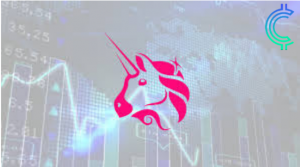05 / 26 / 21
UNISWAP AT A GLANCE
Uniswap at a Glance
Uniswap happens to be a decentralized cryptocurrency exchange running on the Ethereum network. The platform rolled its initial version (Uniswap v1) in 2018 that acted as a Proof of Concept for Automated Market Makers. Two years after that, Uniswap v2 was released which was an upgrade to its features and optimized the current platform as well to make it more user-friendly and efficient. This allowed the platform to experience exponential growth and millions of users adopted AMM. As a result, Uniswap was able to entertain a transaction volume worth more than $135B, enabling it to compete with some of the most prestigious and already established names in the industry as well.
It is worth noticing that on 5th May 2021, Uniswap v3 was announced which now positions them as a pivotal platform for DeFi and allows developers, traders, and liquidity providers to take advantage of the generic nature of the platform.
Let’s explore the salient features offered by Uniswap v3 (which are either new or more optimized from its previous versions).
- Concentrated Liquidity
In the recent launch, liquidity providers do not just have to pool their funds and spread evenly across the price curve. In fact, they are allowed to choose the funds they want to stake and the price bracket for which they want to provide liquidity.
- Active Liquidity
This is quite closely related to concentrated liquidity. For instance, the funds that you pooled only stay active for participation in the given price bracket. As soon as the price of the assets fluctuates and moves in any direction, your funds will become inactive for the platform to use.
As a result, you won’t earn a fee if the price of the coin is out of the given range.
- Range Orders
This is a bit complicated than active liquidity and in fact, it’s the exact opposite as well. It allows you to pool a single token only and set a price range for it.
As soon as the market hits your price range, the token will be sold for the assigned pair and you will earn a swap fee. Although it may sound a bit difficult, it could drastically increase your earnings if used in conjunction with active liquidity.
- Non-Fungible Liquidity
Now that they offer custom price ranges for LPs, the positions cannot be mapped to tokens in the core protocol either. To give it more perspective, consider the pair ETH/DAI and the respective ranges $1850-$1950 and $1800-$2000 – these two are not the same and cannot be rewarded at the same rate.
- Flexible Fees
In the first version of Uniswap, the fee was set at 0.3% and all of it was reserved for liquidity providers. However, the following fee structure applies in v3:
- 1% for exotic and non-correlated pairs
- 3% for standard non-correlated pools
- 05% for stablecoin pools
- Advanced TWAP Oracles
Unlike v1, the latest version is able to store an array of cumulative sums rather than a single value. As a result, the network would be able to calculate any TWAP in the last 9 days with higher efficiency and low cost.
RECENT POST
04/11/23
Crypto Currency Best Practices

Leave a Reply